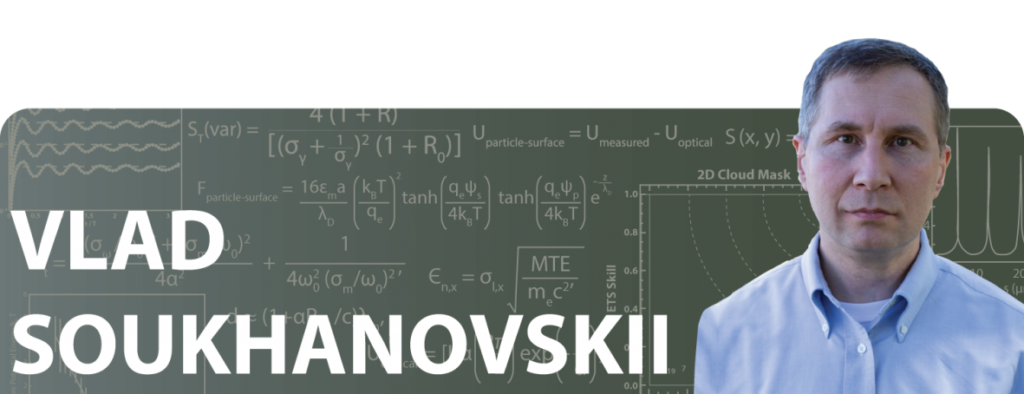WHAT DID THE 2010 EARLY CAREER AWARD ALLOW YOU TO DO?
A tokamak is an experimental device designed to harness the energy of fusion using a complex system of magnetic fields to confine the hot plasma. Inside a tokamak, the energy produced through the fusion of atoms is absorbed as heat in the walls of the vessel. The design is still under development, but in future fusion energy-based power plants, this heat would be used to produce electricity. One of the grand challenges of magnetic fusion research is creating an optimal interface between the hot plasma and the tokamak’s exterior wall, particularly in the regions known as the divertor chambers, given the extreme temperature conditions fusion experiments produce. When particles and heat escape from confinement because of plasma transport and instabilities, a divertor chamber magnetically diverts them away and collects them. The novel magnetic divertor concept called a snowflake divertor was developed theoretically by Dmitri Ryutov and colleagues at Lawrence Livermore National Laboratory.
This Department of Energy Office of Science Early Career Award made possible experimental studies of the snowflake divertor configuration on two U.S. tokamaks—the National Spherical Tokamak Experiment at the Princeton Plasma Physics Laboratory and the DIII-D National Fusion Facility at General Atomics. The experiments demonstrated a drastic reduction of heat loads on plasma-facing divertor components and compatibility with extreme conditions, providing further support to the snowflake divertor configuration as a viable plasma–material interface for future tokamak devices. The Early Career Award also enabled developments in diagnostics and modeling in support of divertor research.
ABOUT:
Vsevolod A. Soukhanovskii is a group leader at the Fusion Energy Sciences Program at the Department of Energy’s Lawrence Livermore National Laboratory. He and his research group are stationed on a long-term assignment focusing on edge plasma transport and plasma-surface interactions in spherical tokamaks at the Department of Energy’s Princeton Plasma Physics Laboratory.
SUPPORTING THE DOE SC MISSION:
The Early Career Award program provides financial support that is foundational to young scientists, freeing them to focus on executing their research goals. The development of outstanding scientists early in their careers is of paramount importance to the Department of Energy Office of Science. By investing in the next generation of researchers, the Office of Science champions lifelong careers in discovery science.
For more information, please go to Early Career Research Program page.
THE 2010 PROJECT ABSTRACT:
Advanced High Heat Flux Divertor Program on the National Spherical Torus Experiment
The objective of this research is to investigate advanced divertor solutions, including the “snowflake” divertor configuration on the National Spherical Torus Experiment (NSTX). One of the grand challenges for magnetic fusion energy research is to develop innovative plasma‐material interface solutions for high heat and particle fluxes incident on the first wall and divertor. To address this critical research gap, the project will entail an experimental and modeling program to investigate advanced divertor solutions including the snowflake divertor configuration on the NSTX. The project is a study of divertor heat and particle transport in these advanced configurations, and prototype magnetic control and radiative divertor performance optimization with feedback. With the help of a Thomson scattering diagnostic system for divertor electron temperature and density measurements, kinetic and multi‐fluid one- and two‐dimensional transport models of the advanced configurations will be validated. Studying the high heat flux handling divertor solutions on NSTX and NSTX Upgrade will facilitate extrapolations to future spherical tokamak‐based nuclear devices and tokamaks beyond ITER, the international fusion research project.
RESOURCES:
V.A. Soukhanovskii, R.E. Bell, A. Diallo, S. Gerhardt, S. Kaye, E. Kolemen, B.P. LeBlanc, A.G. McLean, J.E. Menard, S.F. Paul, M. Podesta, R. Raman, T.D. Rognlien, A.L. Roquemore, D.D. Ryutov, F. Scotti, M.V. Umansky, D. Battaglia, M.G. Bell, D.A. Gates, R. Kaita, R. Maingi, D. Mueller, and S.A. Sabbagh, “Snowflake divertor configuration studies in National Spherical Torus Experiment.” Physics of Plasmas 19, 082504 (2012). [DOI: 10.1063/1.4737117]
A.G. McLean, V.A. Soukhanovskii, S.L. Allen, T.N. Carlstrom, B.P. LeBlanc, M. Ono, and B.C. Stratton, “Conceptual design of a divertor Thomson scattering diagnostic for NSTX-U.” Review of Scientific Instruments 85, 11E825 (2014). [DOI: 10.1063/1.4894001]
V.A. Soukhanovskii, S.L. Allen, M.E. Fenstermacher, C.J. Lasnier, M.A. Makowski, A.G. McLean, W.H. Meyer, D.D. Ryutov, E. Kolemen, R.J. Groebner, A.W. Hyatt, A.W. Leonard, T.H. Osborne, T.W. Petrie, and J. Watkins, “Developing physics basis for the snowflake divertor in the DIII-D tokamak.” Nuclear Fusion58, 036018 (2018). [DOI: 10.1088/1741-4326/aaa6de]
Original post https://alertarticles.info



